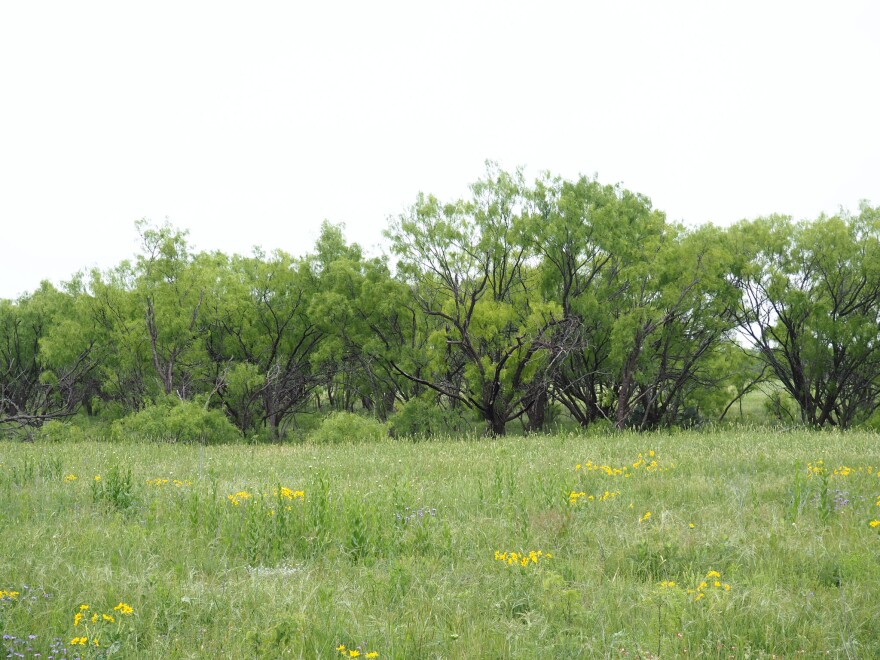It’s all part of the Drought Resilience Incentive Program, DRIP for short. It’s meant to mitigate drought, but not everyone is convinced it will work. The goal of the program is to get more water into West Texas communities, like for pools and watering lawns. The idea is to remove overpopulated species like prickly pear cacti, mesquite, and cedar trees.
“These trees are preventing rainwater from infiltrating into the soil, getting into the groundwater,” says Cy Tongate with the local Water Conservation District. He says rain will get into the ground easier and fill lakes by planting native grasses instead of trees. “They just soak up more water than the ecosystem can really handle.”

Conservationists agree the West Texas landscape didn’t always look like this. Overgrazing caused soil erosion, making it easier for the woody species to take over. And with fire suppression, there was nothing to stop them from overpopulating the landscape.
Ecologist Karl Flocke with the state Forest Service says it’s changed in the last 150 years, “We saw a conversion of what is mostly a grassy area with interspersed woody species to more a woody region with interspersed grassy areas.”
With more than 93% of Texas land privately owned, it’s really up to landowners, like John Hays of Brown County, to help restore it. Hays is a radiologist by day and also owns more than 1,300 acres.

“I’m trying to make this place like it used to be,” Hays said during an ATV tour of his property. There are green open pastures, dotted with pink and yellow wildflowers. Bison are grazing, and whitetail deer bounce around in the distance. This is the half of his property he’s already cleared on his own. It’s more grassland for his bison. Now he plans to use the federal grant money to clear 80 more acres.
“Even with the feds or state paying half, you’re still going to end up paying. It’s still going to cost me $20,000 of my pocket money to do that 80 acres.”
Money is a big hold-up for other landowners, Hays says. Programs like DRIP only cover a portion of the cost. And he says Texas landowners are skeptical of federal programs. “A lot of people don’t like that. ‘I don’t want the feds anywhere around,’ ya know, ‘My place.’”
There’s also skepticism that DRIP will do what it’s supposed to, get more water into surrounding communities, says Ecologist Bradford Wilcox with Texas A&M. “In terms of strategy for increasing water during drought, it’s not a very effective strategy,” Wilcox says that’s simply because there isn’t a lot of rainfall in this part of Texas. “Most of the water is going to be used up by plants, whether it’s grasses or trees.”
He still believes, however, replacing the trees and restoring the Rolling Plains is important for biodiversity. But the DRIP program, he says, should not be marketed as a way to increase community water.
About 40 Texas landowners have agreed to be part of the project, and the clearing of about 4,000 acres of Texas plains is expected to start later this year.

